FOR MORE THAN 250 YEARS THIS HOUSE, NOW OWNED BY DOUG AND LYN CROMPTON, HAS PLAYED AN IMPORTANT ROLE IN THE HISTORY OF BUCKS COUNTY
by Beth S. Buxbaum

Untainted by the progress swarming all around it, this tiny, Bucks County fieldstone farmhouse, has sat quietly in the center of Richboro for more than 250 years. With a charming simplicity, reminiscent of simpler times, the Bennet Search house has been home to dozens of families for more than two centuries. Owned by Doug and Lyn Crompton, the Bennet Search House was named a National Historic Landmark on June 5, 1973 and is on the National Register of Historic Places. The property is also referred to as Hampton Hill. The Crompton's research has garnered pages of history about their colonial farmhouse. Its history begins in the late 1600's when the Bennet family arrived from Holland. It is known that Abraham Bennet bought several acres of land in Northampton Township in 1687. In 1731 William Bennet, Abraham's cousin, bought the land and built the first section of the house. William, a blacksmith, and his wife, Charity, and their ten children lived in the farmhouse for more than four decades.
According to historical accounts, the house was owned by the Bennets during the 18th and early 19th centuries and thereafter by three generations of the Search family, who are actually descendants of the Bennet family. Recounting much of the farmhouse's earliest history, it is noticeable that most of the families were large, with six or more children and quite probably many of the children's bedrooms were in the attic. The Bennets, believed to be the earliest immigrants from Holland to settle in Northampton Township, set up their homestead on several hundred acres, a few feet off what was once, and is today, a rural thruway. In fact, the Cromptons explain that it was the main road to Philadelphia, with stagecoaches running through several times a day.
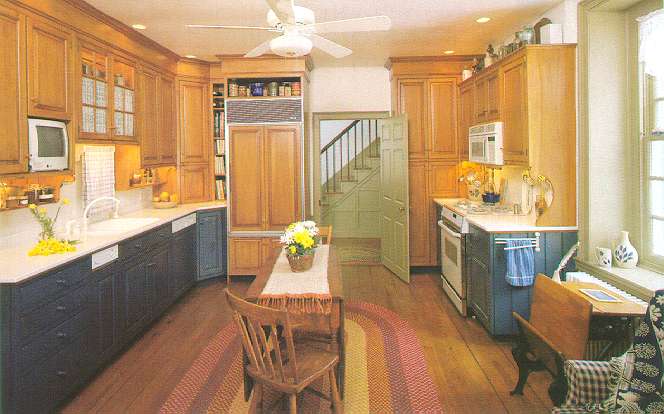
The Bennet Search house was built in two sections, the first dating back to the early 1700s and the second section built more than 30 years later. According to documentation, the first section consisted of two rooms, one on each of the two floors. On the first floor was the kitchen with a large nine-foot wide cooking fireplace. The second floor had a paneled bedroom with a small fireplace. The Crompton's description of the original structures on the land includes the main house, a stone wood shed, a three-story stone wagon shed, a cold vault and a massive frame Dutch barn. The house has all the original mantles, moldings, wood floors, walls and hardware. The original pantry is still intact, with a sink hallowed out of one large piece of stone. This pantry, which fills the space between the jamb of the fireplace and the outside wall, has been converted into a bathroom. All the families were farmers. Historically the property was referred to as a plantation. In addition, the Search family used the house for many years to house tenant farmers who worked for them. Parcels of the land were sold off gradually through the years. Doug adds that the house was vacant for many years in the mid 1900s and was used to store grain. Modernized in the 1930s, the house had no central heat, plumbing or electricity. The house was in Doug's family owned by his mother until the Cromptons bought the farmhouse in 1990.
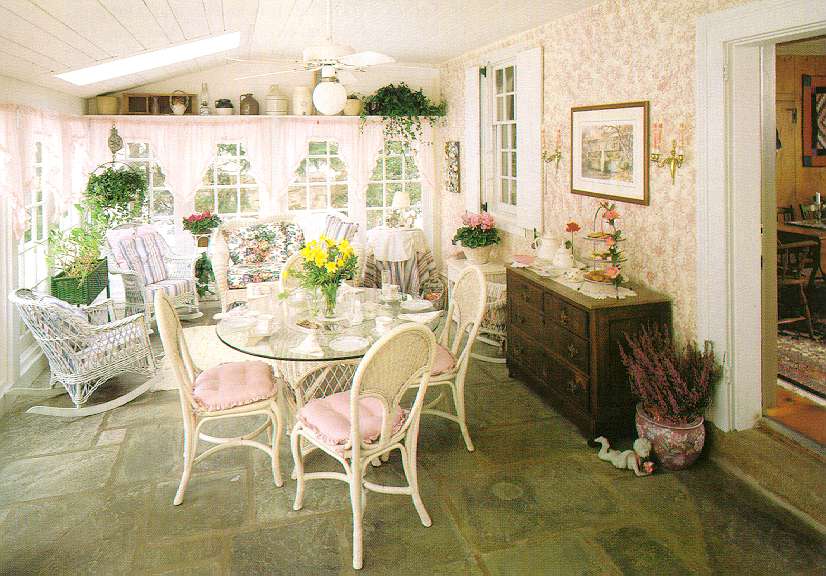
The Crompton's have done much of the restoration and decorating themselves. Their restoration was extensive. "We restored the walls, floors and paint and updated the plumbing and electricity. The structure was sound," Doug, President of the Northampton Historical Society said. They wanted an old house they could work on themselves, and that they did, working to recreate and maintain the farmhouse's past. This house holds a lot of history, not only from its age but also its colorful past. There are at least three legends connected with the Bennet Search house. One is that the Delaware Indians assembled between the wood shed and wagon shed in the early 18th century to trade with the Bennets and other early settlers. Also, it is believed that a slave burial ground was located 300 to 600 feet north of the house. Lastly, during the period before the Civil War, the house was a stop on the Underground Railroad. Evidence for this is a stone arched tunnel found west of the house and an arch structure that exits in the basement.
In 1919 Dr. Henry Mercer toured the house and recorded it in "Old Houses of Bucks County". Noting the "very beautiful unpainted paneling" of the second floor bedroom, he made a plaster cast of the closet door which is now at the Mercer Museum in Doylestown. The interior of the home is bright and sunny due particularly to its many windows. The entrance hall is an expansive, elongated area which leads into the living room. Standing in the entranceway....
and sunny due particularly to its bay windows.
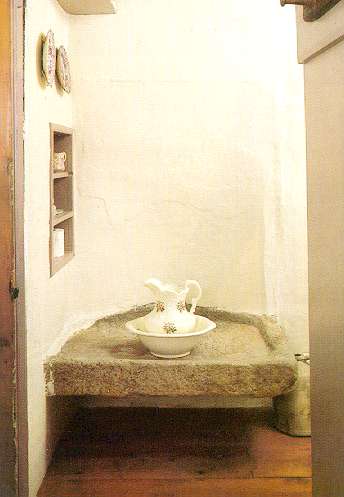
is a black walnut Kas (armoire) which, according to the Cromptons, was sold with the house many times. It has been repainted and decorated in a colorful Pennsylvania Dutch motif. Against the same wall is an antique piano adorned above by an 1880 oil of New Jersey Beach done by A. C. Stuart. Along the other wall is a rustic bench from the 1800s decorated with a handmade quilt and pillows. Beyond the entranceway is the recently renovated kitchen. The Cromptons had skilled craftsman, Frank Hirsch put in the new cabinetry which he made in an unfinished poplar. They then refinished the cabinets to give a pine look and the bottom cabinets were painted with an artfully distressed peacock blue. -We were very conscious of doing the remodeling so it would blend with an old-style house," the Cromptons explain.

Beyond the kitchen is a screened in porch. Originally this was just a roof and was added in the late 1800s. Over the years different owners added more to create the porch. The Cromptons added the finishing touches. The sponge painting on the concrete wall, skylights, a ceiling fan and a slate floor. This room is all in white wicker and glass and includes three antique rockers. In the original structure, which is now the dining room, is a massive stone fireplace. This room was the original family living space where they cooked, ate and gathered. A beehive oven was located outside the house and connected with the
room to add a light black tin fixture .
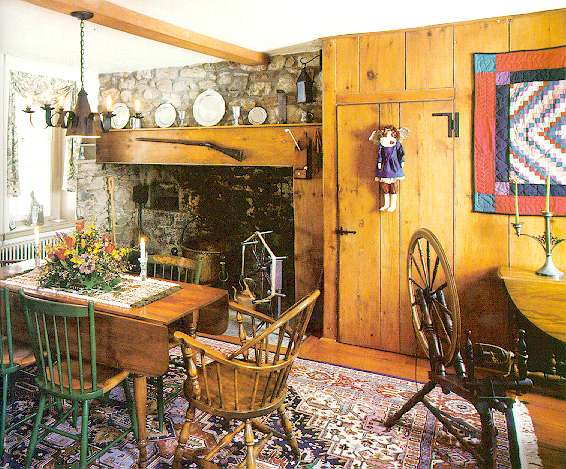
inside, entering through the back wall of the fireplace. The fireplace, with a large wooden mantle, is decorated with wrought iron and pewter pots and a copper tub. Alongside the fireplace are two interesting conversation pieces, a wool winder and a spinning wheel. In the center of the dining room, which is beige and hunter green, is a Cherrywood drop-leaf table with four green Hitchcock chairs. The Cromptons added a wood beam to the center of the room to add a black tin light fixture .

Many family heirlooms are displayed throughout the interior, including furnishings, china and portraits. Most have been in the Crompton/ Thackara (Doug's ancestors) family for decades. In this room is an 18th century corner cabinet and a spruce green breakfront with a collection of Lemoge dishes from the Thackara family. A visible addition to one wall is a set of winding stairs, or winders, leading up to the second floor. These stairs lead all the way from the cellar to the attic.

Ascending the winders, a large portrait of George Washington hangs above the landing. This was done by Ralph Pallen Coleman, a local artist, for the magazine section of the Inquirer. On the landing is a candlestick table, which then leads to a tiny resting area. There is a display of her antique doll collection in a windup cradle dating back to 1852.

A focal point of the master bedroom, part of the second section, is a canopy, rice bed in an 18th century design. The room is rust and white enhanced by delicate stenciling and the exposed beamed ceiling. The second bedroom is also decorated with a canopy rope bed made in Scotland, decorated with a crocheted canopy cover. The room has an original fireplace and wood paneled walls. Above is a huge attic, that the Cromptons use for storage. But imagine centuries ago this attic being fully occupied, echoing with the laughter and movement of the youngsters. As the family meal boils in the copper tub in the nine-foot fireplace, the workers come in from the fields to rest in preparation for another day's work.
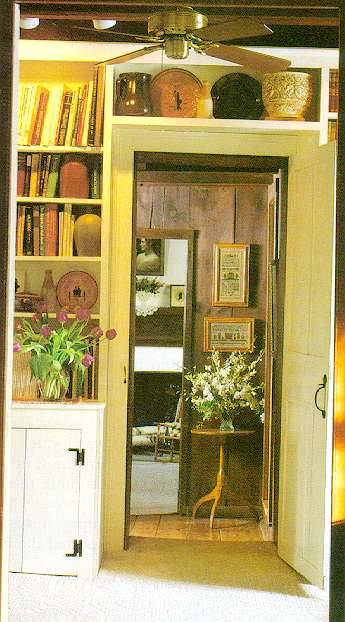
The Bennet Search house is a relic; from its history, to its exterior strength and interior timelessness. Every added element authenticates the rustic, rural quality the house possesses. In its simplicity this colonial farmhouse is a reminder of times gone by.
